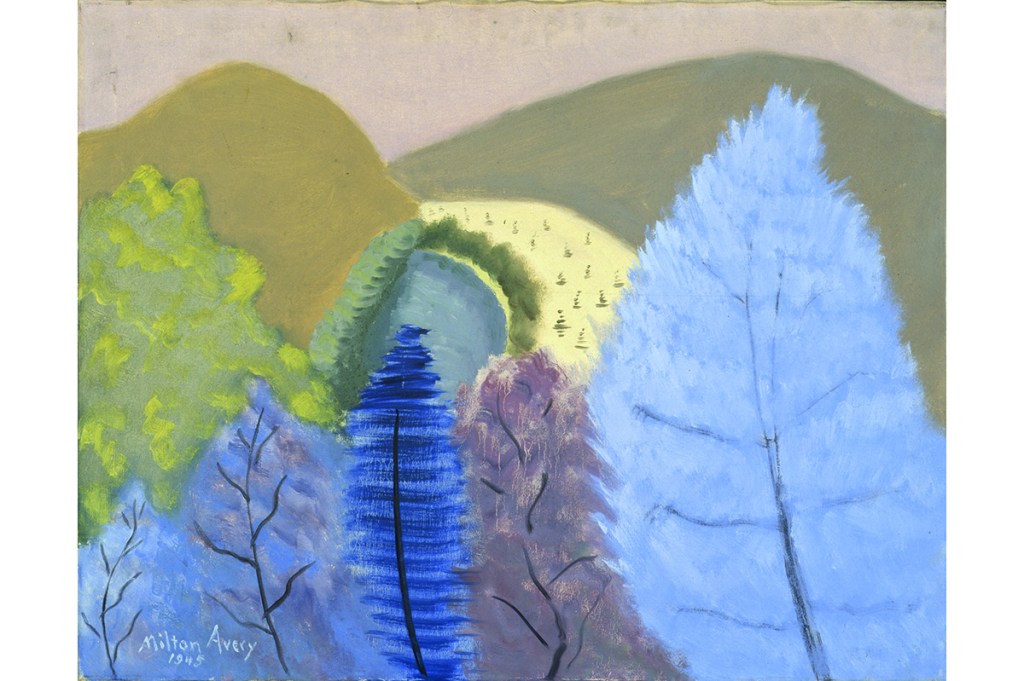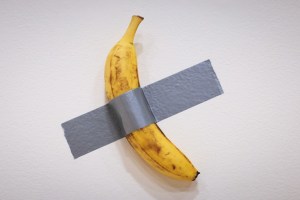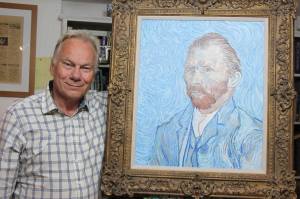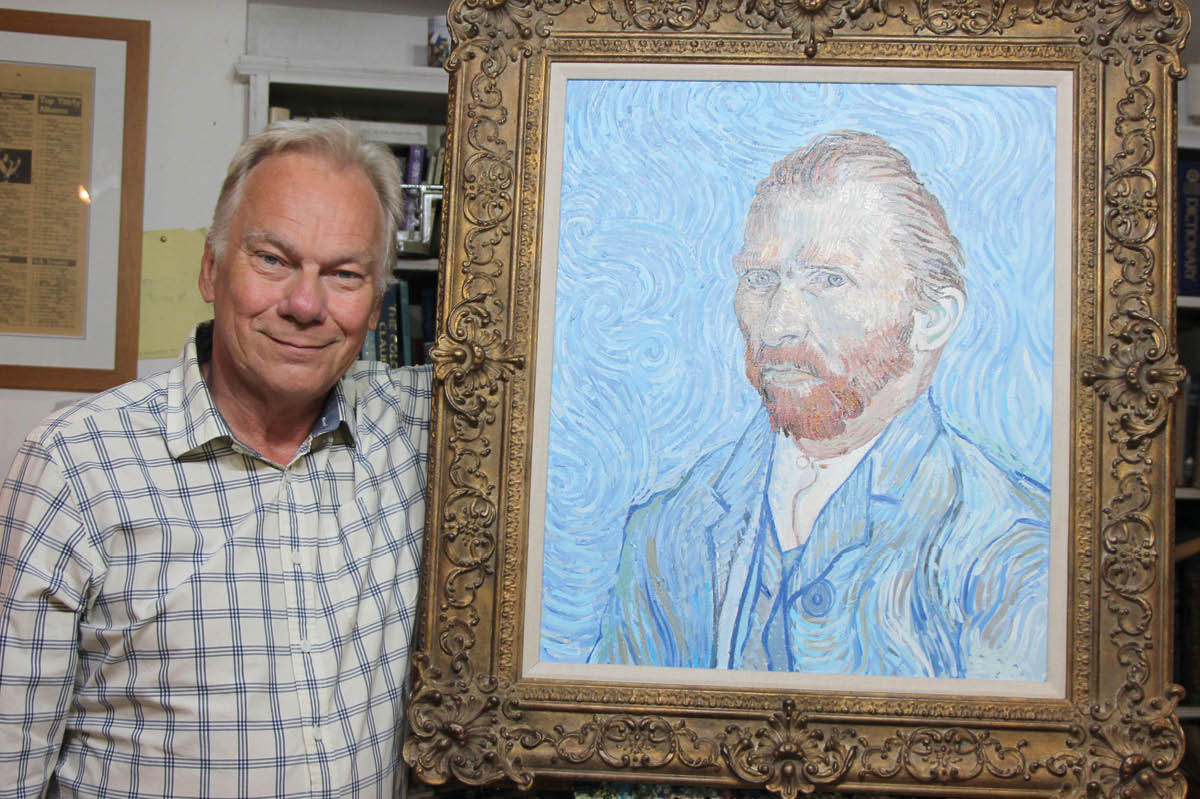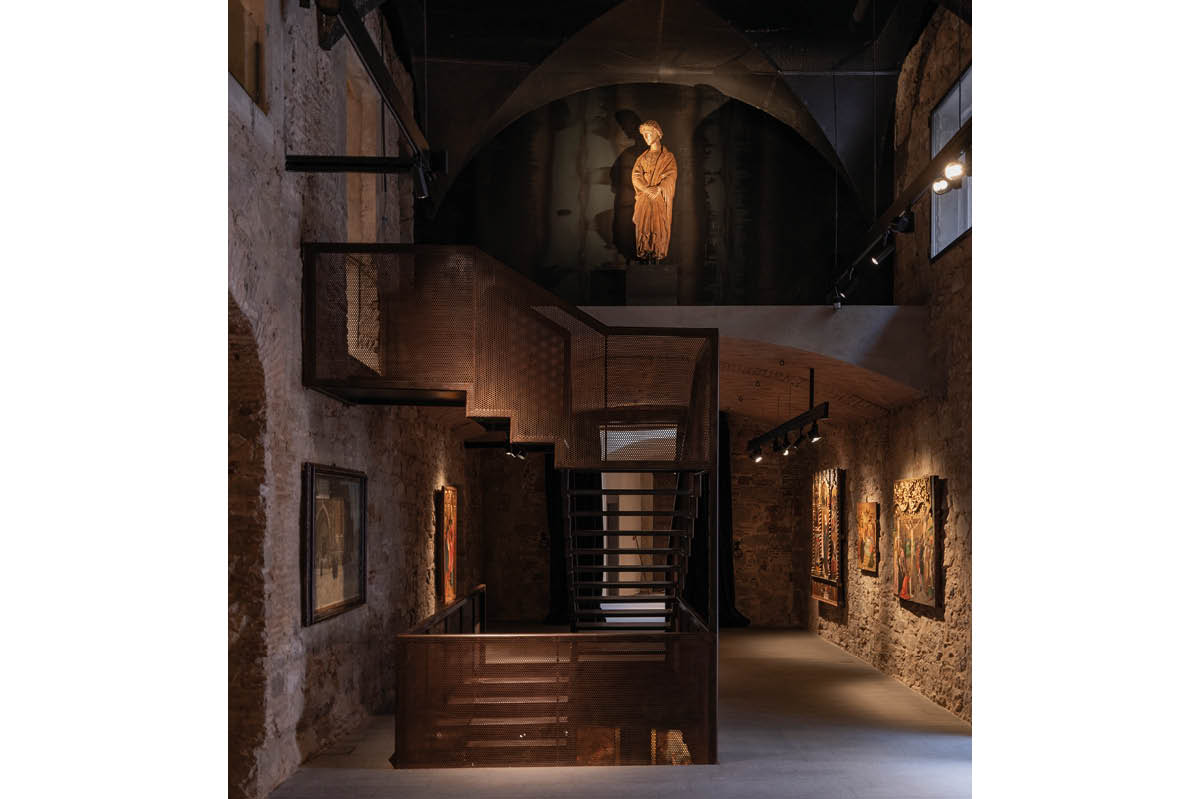“Those trees are blue — I never saw a blue tree in Vermont,” a collector once argued to Milton Avery when looking at one of his New England forest scenes from 1945. The reticent artist parried: “That one was done in New Hampshire.”
“Blue Trees,” the painting in question, is classic Avery (1885-1965): logically nonsensical but improbably believable, forcing us to re-question language’s tenuous hold on the slippery wonders of color. It’s also one of the standout examples included in a new retrospective of the American painter, set to open at the Wadsworth Atheneum Museum of Art (Hartford, Connecticut) on March 5, the middle leg of a three-venue tour. Curated by Edith Devaney, Milton Avery was first seen at the Modern Art Museum of Fort Worth, Texas, and it will continue on to the Royal Academy of Arts, London, this July.
The breathed-into-life ease and disarming simplicity of paintings such as the above bely decades of experience that set the stage for their creation. Born to a working-class household in a provincial New York village inland from Lake Ontario, Avery was for the first twenty years of his life responsible chiefly for helping his family make ends meet. Yet though he took various jobs in factories and offices, he devoted off-hours to painting, having come to it first through hopes of a career in commercial lettering.
Having moved with the family to Hartford, Avery began training in the academic tradition at local art centers, developing his hand and eye in life-model drawing classes. Influenced by American Impressionists like John Twachtman, tonalists like George Inness and Romanticists like Albert Pinkham Ryder, he developed an obsession with capturing the light and color of the landscape, which he rendered through dense layers of enamel-like pigment.
At a Massachusetts artists’ colony in the summer of 1924, Avery, then almost forty, met a young artist and illustrator from Brooklyn named Sally Michel. The next year, he followed her to New York, and they married in 1926. By all accounts Sally was instrumental to Avery’s achievement, providing moral support through difficult times as well as a steady income (she did commercial illustrations for magazines and newspapers) that freed Avery to devote himself fully to painting for the first time. Moving to New York also gave Avery access to galleries that exhibited the most adventurous art then being made, especially the radical post-Impressionist and modernist canvases coming out of Paris. By 1930, a marked change had occurred. Though he later downplayed the importance of Matisse, Avery clearly learned from the French modernist in his thinning out of colors to a turpentine-diluted stain, pitting depth-seeking contours against shallow planes of color.
In Depression-era New York, the art world was dominated by those who thought painting should express social narratives that advance political agendas. Reacting against the decadence and internationalism of 1920s modernism were Regionalists like Thomas Hart Benton and Grant Wood, who used painting to propagandize salt-of-the-earth rural virtue, as well as Social Realists like Ben Shahn and the WPA muralists, who raised class-conscious concerns about economic inequality.
Avery declined to join the painting-as-sociology fray. Works like “Coney Island” (1931), “Chariot Race” (1933) and “The Auction” (c. 1930s) cast a keen eye on the oddities of urban life, but Avery’s chief concerns remained “pure painting” questions of color and design. Lean years ensued. Though he assembled a small coterie of friends and followers, including future Abstract Expressionists such as Adolph Gottlieb, Mark Rothko and Barnett Newman, Avery received little outside recognition, critical or commercial. As the lonely hours at the easel piled up, doubt crept in: “Either I am crazy or they are crazy,” he’s said to have pondered aloud.
To be sure, the soot-begrimed mood of 1930s New York had some kind of effect on the canvases. Avery’s paintings from the decade strain to find as much light out of as little color as possible. They are interior meditations, subdued nocturnes in gray and brown. Yet as time passed, Avery pushed outward, exploring the expressive potential of brighter and more vibrant chromas. He summered in (then-cheap) New England countryside towns, making watercolor and gouache sketches of the idyllic landscape and seascape, bringing these studies back to New York to work from in oil.
The 1940s also saw Avery achieve a degree of external success, and in the early days of Abstract Expressionism’s rise to power, ascendant avant-gardists including Rothko and Gottlieb heralded him as a forefather to the movement. But Avery never enlisted with the cause. Quirky and personal, even willfully awkward, his paintings had none of the imperial machismo of those enormous Ab-Ex canvases. And whereas the younger painters of the New York School dove headlong into the nonobjective abyss, Avery’s work sat at the edge, stubbornly grounded in his firsthand experience of nature, no matter how distilled. When Rothko proposed to Alfred Barr, the influential director of the Museum of Modern Art, that Avery was the greatest American painter, Barr laughed in his face. The paintings, too abstract for yesterday’s taste, were suddenly old hat.
Avery kept working. Guided by an upstate Puritan ethic that saw virtue in a job well done, he followed his own path, unswayed by critical trends: “In order to paint one has to go by the way one does not know. Art is like turning corners: one never knows what is around the corner until one has made the turn.” Though hampered by a heart attack in 1949, he made some of his most surprising pictures in the mid- to late 1950s, fashioning landscape after light-filled landscape well into his seventies.Those lambent planes of color — simple shapes made complex through sensitive layering — grew larger and more optically impressive. Avery was prolific in these years, and though the current retrospective includes only a handful from the period, examples such as “Excursion on the Thames” (1953), “Hint of Autumn” (1954) and “Sea and Sand Dunes” (1955) more than vindicate their maker as among America’s most fascinating colorists, with an astonishing ability to combine tones that seem totally incompatible, yet somehow cohere into harmonies that are precarious and thrilling.
An interesting question that the present retrospective declines to investigate is Avery’s relevance to contemporary painting. We now find ourselves in a situation much like that of the 1930s, with art being judged chiefly according to its political and social utility. One wouldn’t assume this to be Milton Avery’s moment. Nevertheless, serious painters as different as Katherine Bradford, Lois Dodd, Reggie Burrow Hodges, Alex Katz, Graham Nickson and Giordanne Salley show us that Avery’s idiosyncratic consolidation of abstraction and representation, as well as his fiercely independent spirit, have been sustained and elaborated upon, to winning effect.
Perhaps because he remained aloof from the fashions of his day, Avery was able to carve out his own path, distinct from modernism’s march through history, that remains ripe for further study. Or maybe the paintings feel timely because their concerns are timeless. As long as being a human continues to mean being receptive to the natural world, to individual feeling and to the mysterious vagaries of color and sight, Milton Avery’s art will reward our close attention.
Milton Avery is on view at the Wadsworth Atheneum Museum of Art until June 5, 2022. This article was originally published in The Spectator’s March 2022 World edition.



